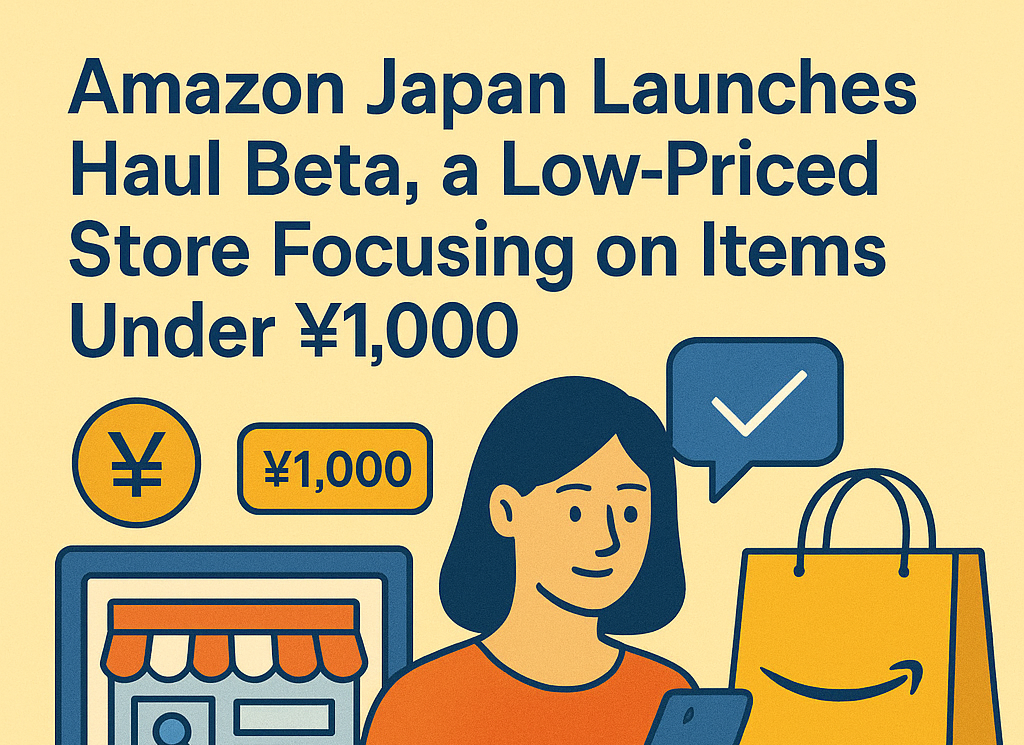Address
304 North Cardinal St.
Dorchester Center, MA 02124
Work Hours
Monday to Friday: 7AM - 7PM
Weekend: 10AM - 5PM

In a strategic move that US e-commerce brands and Amazon sellers should monitor closely, Amazon has introduced Haul Beta in Japan — a dedicated, low-priced storefront featuring items priced at or under ¥1,000. Below is an in-depth breakdown of what the launch means, implications for U.S. sellers, and actionable steps you can take now.
Haul Beta is a newly rolled-out in-app shopping experience from Amazon Japan offering a curated selection of value-priced items, including thousands of SKUs under ¥1,000. The storefront provides a dedicated search and checkout experience and highlights categories such as fashion accessories, home goods and everyday essentials.
Key features include:
Source: Amazon Japan announcements and marketplace reporting.
Amazon is deploying value-first storefronts globally to compete with ultra-low-price entrants. Haul provides a separate experience optimized for shoppers who prioritize price over speed or brand, signalling Amazon’s intent to capture the value segment without diluting its mainstream marketplace.
Items in Haul Beta are focused at or below ¥1,000 (~US$7–8). That implies high volume and very low per-unit margin. U.S. sellers must assess if they can source or manufacture SKUs profitably at this price after landing, duties and returns.
Haul has its own search, cart and checkout flow inside the Amazon app. Listings inside Haul may behave differently from standard Amazon search results, so discoverability and feature parity (Prime, badges) can differ.
Typical delivery targets are around two weeks for Haul items; returns policies exist but are tighter compared to mainstream Prime items. For U.S. sellers, logistics choices (FBA vs. direct ship) will directly affect margin viability.
The product mix tends toward unbranded, commodity items (cases, accessories, small household goods). If your brand is mid- or premium-tier, competing in Haul risks diluting brand perception.
If you have low-cost SKUs or can source light, inexpensive items with low shipping costs, Haul offers a channel to test volume sales in Japan. Use it for clearance SKUs, cost-efficient novelty items, or A/B testing new product ideas with limited brand risk.
Ultra-value pricing compresses margin; added shipping, duties and potential returns can erase profits. Additionally, associating your core brand with ultra-low-price storefronts can harm long-term positioning.
Existing sellers on Amazon.co.jp may find new pricing pressure from Haul listings. You’ll need to decide whether to match price, differentiate on quality, or retreat to premium niches.
The launch of Haul Beta in Japan — focused on items under ¥1,000 — signals Amazon’s push into a distinct value storefront strategy. For U.S. sellers and e-commerce brands, it’s an opportunity to test low-cost SKUs and reach new shoppers, but it also brings margin, logistics and brand risks that require careful analysis.
Contact Us to Assess Your Opportunity
Need help auditing SKUs, mapping landed cost to Japan, or optimising fulfilment? We’ll run the numbers with you.
Haul Beta is a dedicated low-priced storefront launched by Amazon Japan, offering a large selection of items including those under ¥1,000. It uses a distinct app experience tailored to value-minded shoppers.
Amazon has not published exhaustive eligibility criteria for Haul Beta in Japan. However, U.S. sellers who can meet low landed costs, localization and fulfilment targets may be able to participate—subject to Amazon’s requirements.
Ensure your landed cost (manufacture + shipping + customs + returns) supports pricing under ¥1,000 with a sustainable margin. Use logistics options that support ~two-week delivery and account for returns handling.Selected sources & further reading:
© 2025 1981 Tech. All rights reserved.